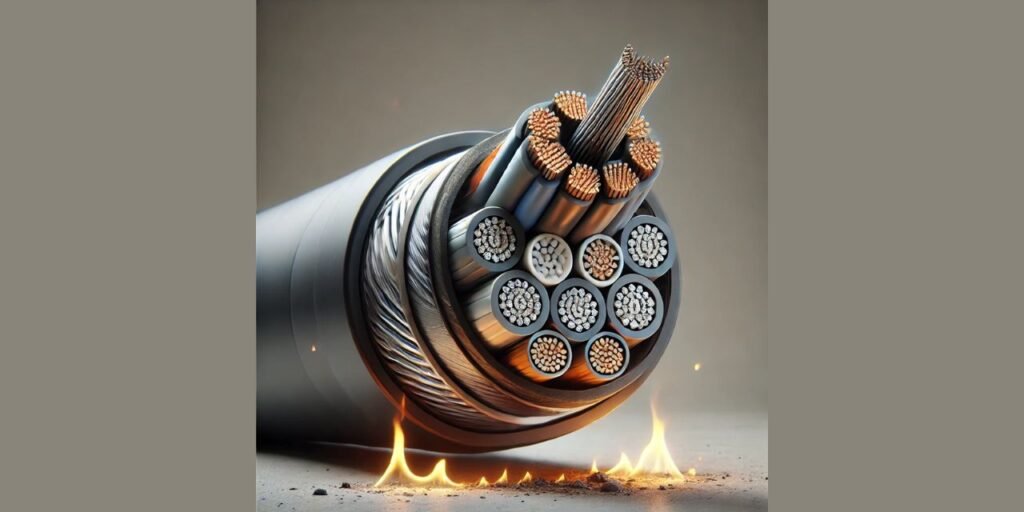
Fire-resistant cables are critical components in modern infrastructure, offering enhanced safety by maintaining functionality even in high-temperature environments. As construction and industrial demands grow globally, fire-resistant cables are evolving to meet stringent safety, efficiency, and environmental standards. According to Persistence Market Research, the Global Fire-Resistant Cable Market is forecast to expand at a CAGR of 3.4% and thereby increase from a value of US$ 1,967.8 million in 2023 to US$ 2,486.7 million by the end of 2030. Here, we explore the latest trends in fire-resistant cable manufacturing and application, providing insights into how these trends impact safety and innovation across industries.
Advancements in Material Technology
Materials play a pivotal role in fire-resistant cable performance. Manufacturers are investing heavily in developing insulation and sheathing materials that offer superior fire resistance, durability, and eco-friendliness. Some advancements include:
- Low-Smoke, Zero-Halogen (LSZH) Materials: LSZH cables release minimal smoke and no toxic halogen gases when exposed to fire, reducing health risks and damage to electronics. The shift toward LSZH materials is especially prevalent in public spaces such as airports and hospitals.
- Ceramic Insulation Technology: In response to high-temperature scenarios, ceramic insulation technology is gaining traction, as it allows the cable to continue functioning even if the outer insulation melts. This technology is particularly valuable for critical applications like emergency lighting and alarm systems.
Eco-Friendly and Sustainable Cables
With the global push toward sustainability, the fire-resistant cable industry is moving towards greener production methods and materials. Trends in this area include:
- Recycled Materials: Increasingly, manufacturers are utilizing recycled materials in cable production, particularly for insulation and sheathing, without compromising fire resistance. This shift aligns with corporate sustainability goals and supports waste reduction efforts.
- Reduction in Hazardous Substances: Fire-resistant cables are being designed to comply with global standards such as RoHS (Restriction of Hazardous Substances) and REACH (Registration, Evaluation, Authorization, and Restriction of Chemicals). These regulations limit or eliminate hazardous chemicals, making cables safer for both the environment and human health.
Integration of Smart Technology
The rise of smart technology is influencing all sectors, and fire-resistant cables are no exception. Smart cables integrated with sensors can detect and report abnormalities like excessive heat, allowing for proactive measures before a fire can break out. Key developments in this area include:
- Thermal Monitoring: Fire-resistant cables with built-in thermal sensors help detect overheating or potential fire risks in real-time. This application is beneficial in industries like oil and gas, where monitoring high-risk environments is crucial.
- Predictive Maintenance: With smart technology integration, fire-resistant cables are increasingly part of predictive maintenance programs, allowing facility managers to schedule repairs or replacements based on real-time data, reducing downtime and enhancing safety.
Higher Standards and Compliance for Safety
As regulations evolve to ensure public safety, fire-resistant cable manufacturers face increasing pressure to meet higher standards. Compliance with standards like BS 8519 (UK) or UL 2196 (US) is becoming essential, influencing cable design and application.
- Improved Certification Processes: Certifications such as IEC 60331 and EN 50200 are driving manufacturers to enhance testing and documentation processes. Cables that meet these standards ensure extended functionality under fire, supporting critical systems like fire alarms, communication networks, and emergency lighting.
- Stricter Building Codes: Governments worldwide are introducing stricter building codes that mandate fire-resistant cables for high-occupancy buildings, tunnels, and transport facilities. Compliance with these codes is pushing manufacturers to innovate continually in product safety.
Expansion of Applications in High-Risk Environments
The demand for fire-resistant cables is rising in sectors beyond traditional construction, including renewable energy, transportation, and data centers, each with unique requirements for fire resistance.
- Data Centers: As hubs for vast amounts of data, data centers require reliable infrastructure. Fire-resistant cables help ensure continued data transfer and prevent major losses in case of fire, especially as facilities move toward more energy-dense designs.
- Transportation Infrastructure: In tunnels, airports, and railways, fire-resistant cables are critical for maintaining communication, lighting, and alarm systems during emergencies. Enhanced fire-resistant cables improve passenger safety and support smoother evacuation processes.
- Renewable Energy Applications: With the growth of wind and solar farms, fire-resistant cables are finding new applications in harsh environmental conditions. They support the safe transmission of power, ensuring renewable energy systems can function reliably and safely.
Increased Focus on Durability and Lifespan
Fire-resistant cables are being designed with longevity in mind. Innovations in construction and material choice improve their durability, making them resilient to physical stress, temperature fluctuations, and chemical exposure.
- Enhanced Armor and Sheathing: Many manufacturers are incorporating advanced armor and sheathing to increase resilience. These improvements extend the cable’s operational life, reducing the frequency of replacements and maintenance.
- Moisture and Chemical Resistance: In industrial environments, fire-resistant cables must withstand moisture and chemicals. Advanced coatings and materials prevent degradation, ensuring cables retain fire-resistance properties over extended periods.
Emphasis on Lightweight and Flexible Designs
Traditional fire-resistant cables are often thick and rigid, making them challenging to install in complex layouts. To address this, manufacturers are innovating lightweight and flexible cables that are easier to install without sacrificing fire resistance.
- Slimmer Cable Profiles: Newer fire-resistant cables are designed with thinner, more flexible profiles. These cables allow for easier routing through walls, ceilings, and tight spaces in commercial and residential buildings.
- Improved Installation Efficiency: Lightweight cables reduce installation time and labor costs, making them ideal for large-scale projects. These designs are particularly beneficial in retrofitting older buildings with modern fire-resistant infrastructure.
Custom Solutions for Industry-Specific Needs
Industries like petrochemicals, healthcare, and mining require tailored fire-resistant cable solutions due to unique operational risks. Customization allows manufacturers to address specific environmental factors and regulatory requirements.
- High-Temperature Resistance for Petrochemicals: The petrochemical industry demands cables that withstand extreme temperatures and remain operational during fire emergencies. Customized fire-resistant cables are built to handle these high-risk scenarios.
- Flexible Designs for Healthcare: In hospitals, fire-resistant cables are often embedded in walls or routed through confined spaces. Customized, flexible cable designs help integrate fire-resistant infrastructure seamlessly without compromising other systems.
